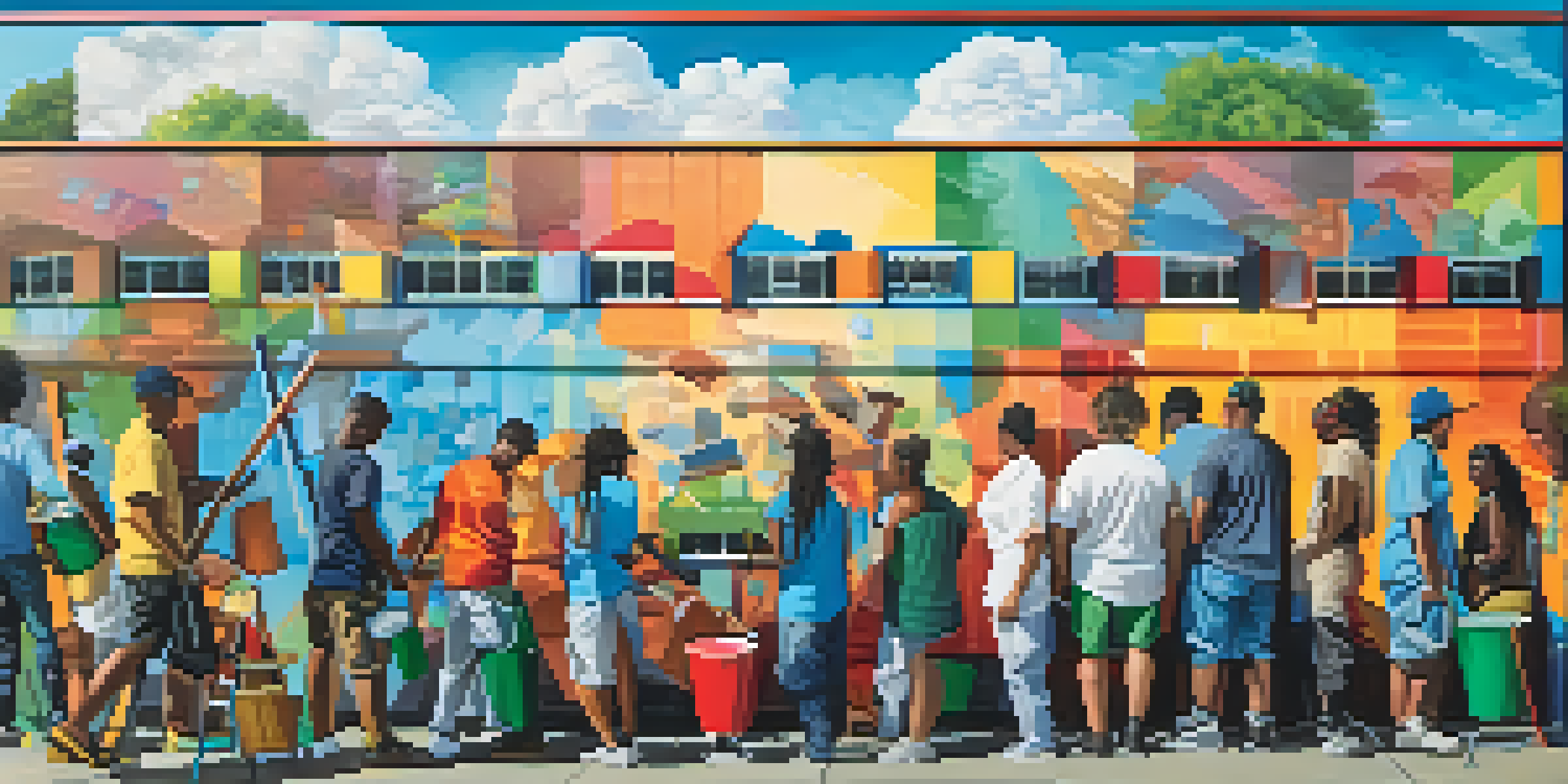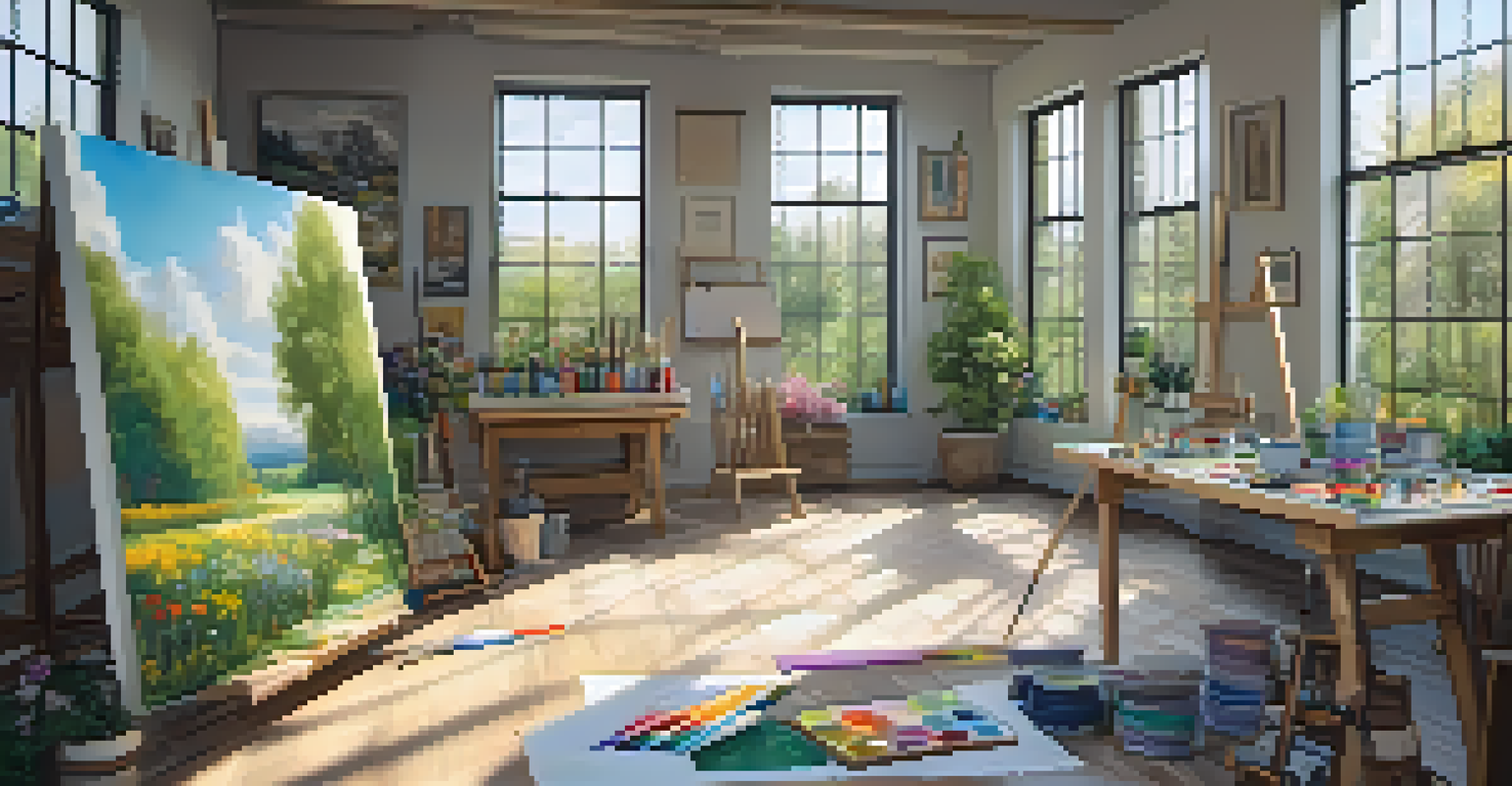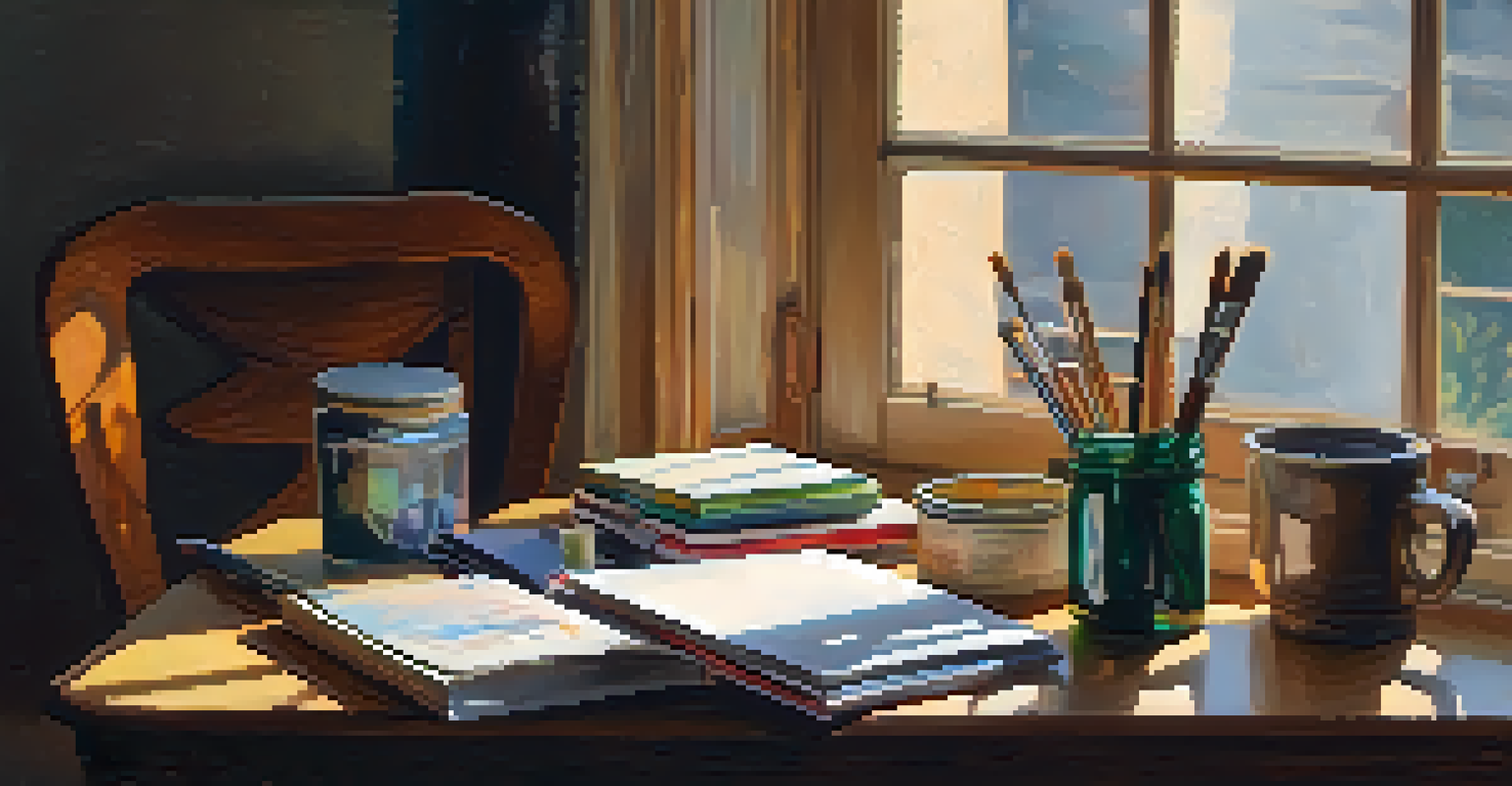Creating Change: The Role of Art in Personal Evolution

Art as a Catalyst for Personal Growth
Art has a unique ability to evoke emotions and provoke thought, making it a powerful tool for personal growth. Whether it's painting, music, or dance, engaging with art can prompt self-reflection and deeper understanding of one’s feelings. This process often leads to moments of clarity that inspire change, allowing individuals to explore new aspects of their identity.
Art is not freedom from discipline, but disciplined freedom.
Consider how an artist might channel their experiences into a compelling piece of work. For instance, a musician may write a song about heartbreak, which not only helps them process their emotions but also resonates with listeners facing similar struggles. This shared experience can create a sense of community and mutual support, further enhancing personal evolution.
Ultimately, art encourages us to step outside of our comfort zones and explore the unfamiliar. By embracing creativity, we open ourselves to new perspectives and insights that can lead to significant transformations in our lives.
The Therapeutic Power of Artistic Expression
Many people turn to art as a form of therapy, using it to navigate life's challenges and emotional hurdles. Engaging in creative activities, such as drawing or writing, can serve as a safe outlet for expressing feelings that may be difficult to articulate verbally. This therapeutic process often leads to a better understanding of oneself and the issues at hand.

For example, art therapy sessions encourage participants to create without judgment, allowing them to explore their emotions freely. By visualizing their thoughts and feelings on canvas, individuals can gain insights into their struggles and fears, making it easier to confront and address them. This can be especially beneficial for those dealing with trauma or anxiety.
Art Fuels Personal Growth
Engaging with art prompts self-reflection and facilitates a deeper understanding of one's identity.
In this way, art not only fosters healing but also promotes resilience. As individuals work through their challenges creatively, they often discover newfound strength and the ability to adapt to life's changes.
Connecting with Others Through Artistic Collaboration
Collaboration in art can lead to profound personal evolution by fostering connections with others. When people come together to create, whether through community murals or theater productions, they share experiences and perspectives that enrich their understanding of the world. This sense of belonging can be transformative.
Every artist was first an amateur.
Take, for example, a community art project where individuals from diverse backgrounds unite to express their stories. As they collaborate, they not only learn about each other's unique experiences but also discover common ground. This shared journey can break down barriers and cultivate empathy, leading to personal growth and a broader worldview.
Thus, engaging in collective artistic endeavors nurtures both individual and communal evolution. The relationships formed through these experiences often provide support and encouragement, helping participants to continue their personal development beyond the project.
Art as a Reflection of Personal Identity
Art serves as a mirror, reflecting our identity and the changes we undergo throughout life. By creating or engaging with art, we can explore our values, beliefs, and experiences, allowing us to articulate who we are. This reflective process encourages us to examine our journey and the evolution of our identity.
For instance, an artist may create a series of self-portraits that depict their changing emotions and life stages. Through this visual exploration, they can better understand their growth and transformation over time. This not only aids in personal reflection but also allows others to see the artist's evolution, fostering connection and understanding.
Art as Therapeutic Expression
Creative activities provide a safe outlet for emotions, promoting healing and resilience.
Ultimately, art provides a platform for self-exploration and expression. By embracing our individuality through creative outlets, we can celebrate our unique paths and the changes we experience along the way.
The Role of Art in Navigating Life Transitions
Life transitions, such as moving to a new city or starting a new job, can be daunting, but art can help ease this process. Engaging in creative activities allows individuals to express their feelings about these changes, providing a sense of control and agency during uncertain times. This expression can also serve as a powerful coping mechanism.
For example, journaling during a significant life change can help clarify thoughts and feelings, making the transition feel less overwhelming. Similarly, creating art that symbolizes new beginnings can be both cathartic and empowering, allowing individuals to embrace their journey with a positive outlook.
By utilizing art as a tool during transitions, individuals can foster resilience and adaptability. This practice encourages a proactive approach to change, transforming potentially stressful situations into opportunities for personal growth.
Art as a Source of Inspiration and Motivation
Art has the remarkable ability to inspire and motivate us, often providing the spark needed for personal evolution. Whether it’s a breathtaking painting, an uplifting song, or a moving performance, these artistic expressions can ignite passion and drive within us. This inspiration can be the catalyst for change, pushing us to pursue our dreams.
Consider how a powerful film can inspire someone to take action in their own life. After watching a story of resilience and triumph, individuals may feel motivated to tackle their own challenges and strive for personal growth. This ripple effect illustrates how art can profoundly influence our thoughts and actions.
Collaboration Enhances Connection
Artistic collaboration fosters empathy and community, paving the way for transformative personal experiences.
In this way, art serves as a mirror, reflecting our aspirations and encouraging us to reach for our goals. By surrounding ourselves with inspiring artistic expressions, we can cultivate a mindset of growth and transformation.
The Lasting Impact of Art on Personal Evolution
The influence of art on personal evolution can be profound and lasting. As individuals engage with and create art, they often experience shifts in perspective, emotional healing, and a deeper understanding of themselves. These changes can lead to ongoing personal development that extends beyond the initial artistic experience.
For instance, someone who finds solace in painting may continue to explore their creativity long after the initial spark. This ongoing engagement can result in a lifelong passion for art, which not only enriches their life but also fosters continuous growth and exploration of self.

Ultimately, the role of art in personal evolution is both dynamic and transformative. By embracing creativity, we open ourselves to new possibilities and pathways, allowing us to evolve in ways we may never have imagined.